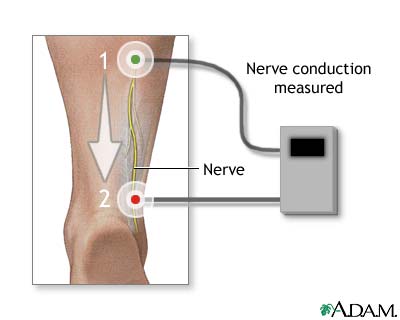
The first part of the procedure is performed on the body’s surface. These types of symptoms include:ĭuring an EMG test, you’ll lie down on an examination table. When is an EMG Necessary?Īn EMG may be necessary if you are experiencing symptoms that are indicative of nerve or muscular disorders.

Primarily, EMGs are used to assess neurological, muscular and neuromuscular disorders. Depending on the results from an EMG, this process can help diagnose or rule out certain conditions. EMGs can detect these signals and interpret whether the nerves are communicating with the muscles properly. The nerves transmit electrical signals to cause muscle contractions. What is an EMG?Īn EMG, or electromyography, is a diagnostic tool used to diagnose conditions that affect the nerves and/or muscles.

We welcome patients from Orange County, Los Angeles County, Inland Empire and the surrounding areas of California. If you are seeking electromyography services to assist in the diagnosis of a complex or common neurological disease, you can trust Coast Spine and Sports Medicine. It is often recommended that accident victims with these symptoms obtain an EMG and NCV as soon as possible.įinding a convenient means of obtaining an EMG and NCV on personal injury medical liens for your clients may have seemed difficult - even before the current pandemic.EMGs are an essential tool in diagnosing neurological diseases. Nerve damage has a wide range of symptoms similar to muscle damage, including prickling or tingling sensations, weakness, numbness, twitching and paralysis. When the tests are performed in tandem, their overall accuracy can be multiplied and may be used along with other important health information to determine an accurate neuromuscular diagnosis.ĮMG and NCV assessments are conducted to determine the extent of muscle and nerve damage due to genetic, chemical or physical causes.Ĭommon symptoms for muscle damage include difficulty moving or increased pain with movement, along with weakness, soreness and bruising. This is especially important in assessing possible nerve and muscle damage, which may not be easily visible, but is nonetheless painful with potential long-range consequences.Įlectromyography (EMG) and Nerve Conduction Velocity (NCV) assessments are referred to as objective medical testing, and are considered the most reliable medical tests that can be performed.Īn EMG measures a muscle’s response to nerve stimulation, while the NCV measures the health of the nerves themselves. Ensuring your client receives the proper diagnostic tests following an accident is essential in determining the appropriate care and recovery.


 0 kommentar(er)
0 kommentar(er)
